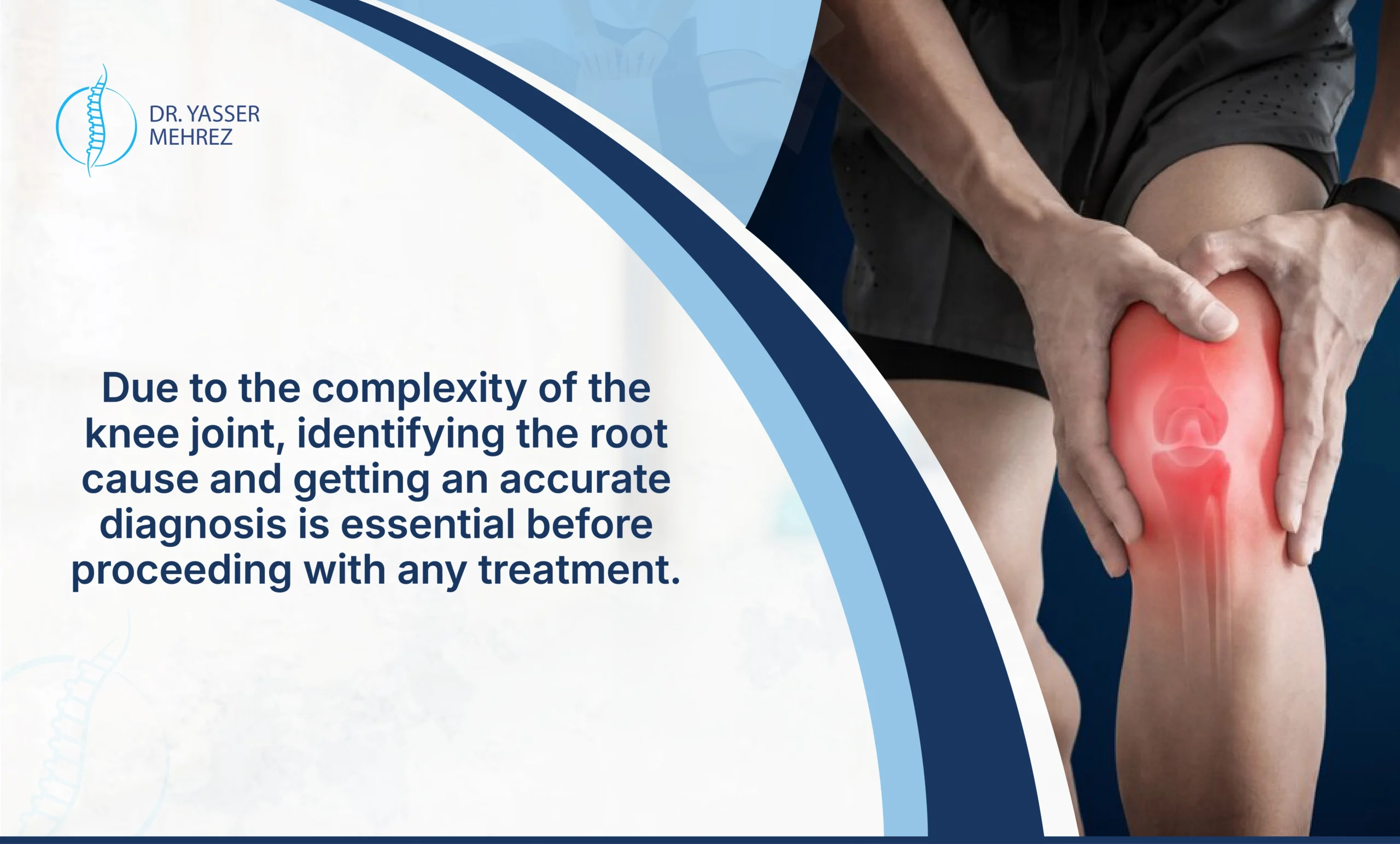Worried your knee pain might lead to surgery?
You’re not alone.
Most people suffering from chronic knee pain think that surgery is the only way to recover. But that’s not always the case. In fact, most knee conditions can be totally managed by using conservative interventions and non-surgical knee pain treatments.
The best thing about these treatments is that you don’t have to pause your routine to get treated, and it saves you from the symptoms associated with surgery. This blog will look at conservative knee pain management methods that might prevent you from undergoing another surgical procedure.
Table of Contents
What Causes Knee Pain and Who Is Mostly at Risk?
Your knee is an important joint of your body. It is made up of bones, ligaments, tendons, and bursae, all working together to support movement and absorb shock.
Therefore, when you experience an injury or harm to just one part of your joint, it can become extremely painful because of the associated imbalance of the joint structures.
Knee pain usually develops over time as a result of an underlying problem or injury. Various painful knee problems are caused by disorders such as arthritis, degeneration, injury, loss of balance, or issues related to metabolism.
- As you age, osteoarthritis attacks the cartilage between your bones and eventually causes it to wear away. The effects of deterioration include friction, which causes pain, swelling, and inflammation.
- Knee injuries involving ligament rupture, meniscus injury, or fractures greatly change how your knees are built and work.
- Wear and tear, or a serious injury, can lead to bursitis, which causes the bursae to swell and become extremely painful.
- Tendinitis — The tendons that support a joint can become inflamed due to overuse or excessive activity.
Several other reasons may raise your risk of developing knee pain:
Age — Joints decline with age. As you get older, your knees become more likely to hurt due to damage and prolonged strain.
Obesity — The whole weight of our body rests on our knees whilst moving. Joints have to endure more pressure due to obesity, which further leads to damage.
Repetitive Activities — Exercises, sports, or jobs that require you to continually move your knees can cause injury.

Non-Invasive Treatment for Knee Pain
Conservative Management
Conservative approaches or knee pain home remedies, such as using cold packs, are usually recommended for painful knees.
Physical Therapy for Knee Pain
Physical therapy is often underestimated when it comes to joint health. However, research supports the opposite finding and consistently shows its effectiveness in managing chronic knee pain.
Frequent and regular physical therapy helps in managing symptoms of knee pain without surgery.
It works on your knee muscles, reducing the risk of injury whilst not specifically slowing down the damage caused by wear and tear.
When your muscles are strong enough, swimming, yoga, or tai-chi will further enrich joint flexibility without putting pressure on them.
Weight Management
Each pound of extra weight adds about 4 lb of additional stress to your knees.
Managing your weight should be your priority if your body mass index isn’t normal.
Activity Modification
You can bend your knees in any direction as long as they’re not painful.
Avoid complex movements if your knee hurts.
If it hurts,
- Stop your jumping or squatting exercises immediately.
- Climb stairs slowly, wear comfortable shoes, and ensure you give enough recovery time to your body.
Pharmacological Interventions
When the pain is severe or cannot be stopped through therapy, NSAIDs or acetaminophen may help reduce the symptoms. However, all these drugs should be taken only if advised by a doctor.
Choose a topical painkiller gel containing menthol, capsaicin, or diclofenac. This helps when you have too many flare-ups.
Even so, because painkillers can have side effects and people can easily become dependent on them, using them isn’t the smartest decision.
Injection Therapies
When conservative therapies fail, you can rely on advanced injection therapies to target your problem.
A corticosteroid injection helps reduce swelling in the joint. Most people use these for temporary pain relief.
Also, ongoing exposure to impact may gradually destroy the tissues around your joints.
Moreover, hyaluronic acid naturally spreads throughout our joints, but as we age, it becomes dry, resulting in friction between the joints.
Treatments that use platelet-rich plasma therapy rely on your blood cells to speed up healing in injured areas. Using this protocol relieves pain and encourages healing in osteoarthritis.
Usage of Assistive and Supportive Devices
If you continue to face problems during your recovery or with daily life, assistive tools can support the results of your injections or conventional care.
Modern Non-Surgical Treatments
If your health specialist has gone through all the usual conservative approaches and cannot yet recommend what’s right for you, radiofrequency ablation may be a good option.
Radiofrequency Ablation for Knee Pain
This is a modern pain management intervention which involves heating a small area with radiofrequency energy to stop pain signalling.
Dr. Yasser Mehrez safely treats knee pain through his non-surgical radiofrequency ablation procedure by blocking the genicular nerves of the knees. It targets the genicular nerves’ function, so they do not send pain signals to the brain. After the nerve function is interrupted, signal transmission stops and lessens the feeling of pain.
Lifestyle Modification in Knee Pain
Basic steps in your routine, such as modifying your posture and using hot or cold patches, can improve the success of your treatment. Minor but regular treatments can help you feel better and move more easily every day.
Surgery is a Possibility
Although doctors try many non-surgical ways, at times, surgery is needed to eliminate knee pain.
When damage to the joints is significant, it really affects your mobility and quality of life.
You should carefully discuss your options with a consultant before deciding to go through surgery.
Choose the Right Knee Pain Solution with Dr. Yasser Mehrez
Some patients find that non-surgical methods work well for their knee pain, paired with personalized care and positive client participation.
If you’re still unsure about how to relieve knee pain without surgery, as treatment options vary, Dr. Yasser Mehrez can evaluate your situation and recommend what works best for you.
Book a consultation today and take the first step toward a more active, pain-free life.
